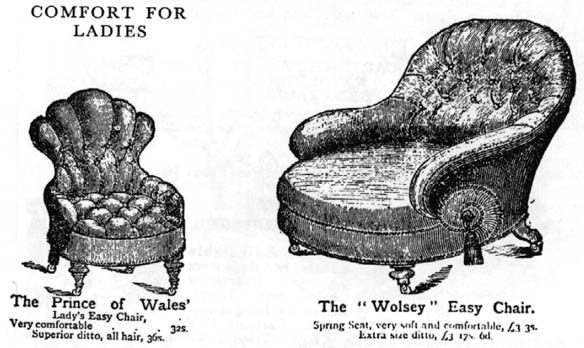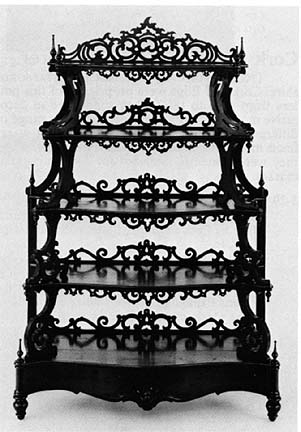Furniture was usually made in the darkest woods available, in contrast wlth the taste of the early years of the century, when satinwood was in vogue and a light finish for mahogany was fashionable. . . . Dark mahogany with a reddish tinge (imparted by the use of brickdust), rosewood, black walnut, and bog oak were all used, while the growing taste for antique furniture, particularly old oak pieces, encouraged makers to stain and darken oak to simulate the rich, deep hue that age and generations of polishing gave to the surviving woodwork of the sixteenth and seventeenth centuries. Much of the furniture was monumental in effect, and copiously decorated with carving in high relief: flowers, fruit, animals, fabulous creatures and human figures, incongruously assembled, skilfully executed, and exhibiting a basic confusion of ornament with design. Although it was generally clumsy, ill-proportioned, and overpoweringly massive in character, the best of this furniture was as well made as the finest cabinet work of the Georgian period. Abundant skill was still available for making expensive furniture; cheaper variations of it were turned out in factories. Gloag, Victorian Comfort, pp. 41-42
Examples from the Exhibition of 1851

|

|
 |
Later Examples
Click on the images to enlarge them.

|

|

|

|

|

|
Related Materials about Victorian Furniture
- Furniture that gave Victorian style a bad name
- One Reaction: Gothic Furntiture
- Art Furniture -- Cabinets
- Art Furniture -- Sofas and Chairs
- Art Furniture -- Pianos
- Bibliography
Bibliography
Elzea, Rowland and Betty. The Pre-Raphaelite Era, 1848-1914. Wilmington: Delaware Art Museum, 1976.
Gloag, John. Victorian Comfort: A Social History of Design, 1830-1900. A. C. Black, 1961. (Reprinted 1973 by David and Charles, Newton Abbot)
Created 31 December 2004
Last modified 17 February 2022